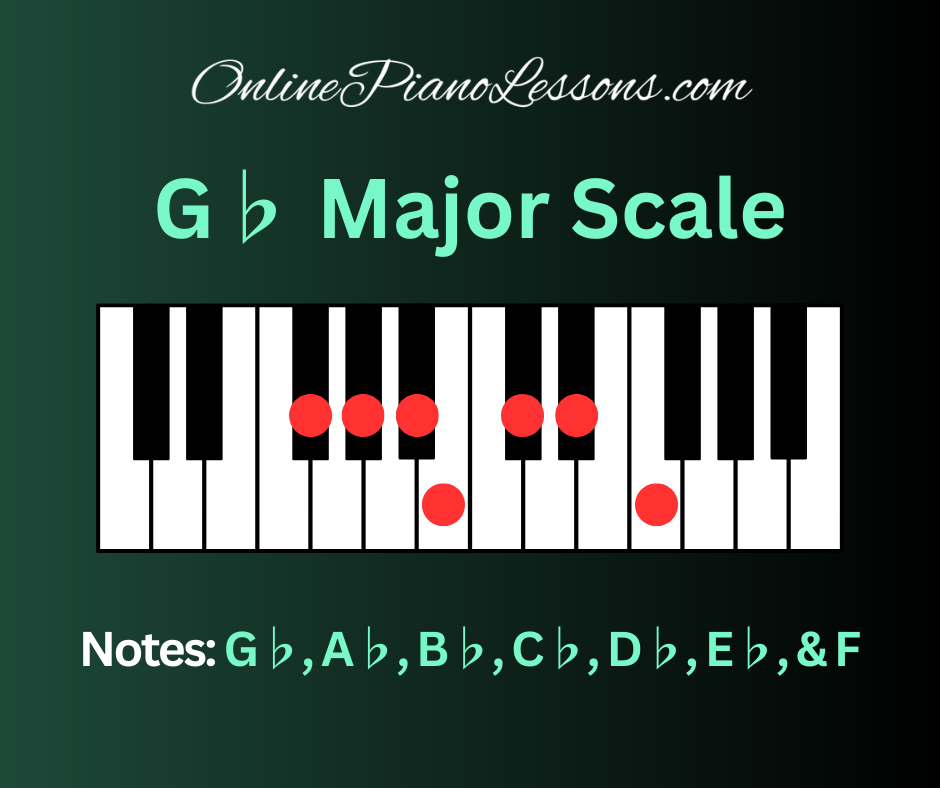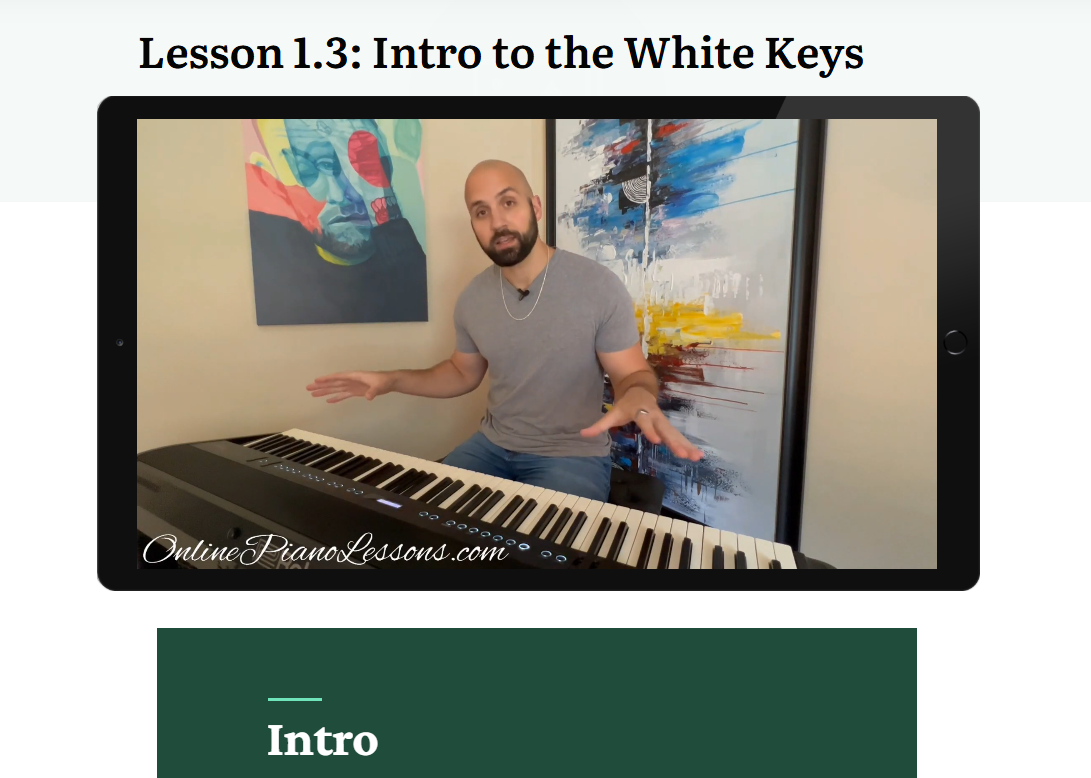
The G flat major scale is a beautiful, warm, and harmonically rich key that pianists love for its smooth fingerings and mellow color. Whether you see it written as G flat major scale or G♭ major scale, the sound under your hands on the piano is unmistakably lush and comfortable. This definitive guide covers what the G flat major scale is, how to find it on the piano, how it functions in harmony, practical fingerings and exercises, its characteristic sound, repertoire that features it, and tips to make your practice more musical.
What Is the G Flat Major Scale?
At its core, the G flat major scale is a diatonic major scale starting on G♭. Its key signature contains six flats (B♭, E♭, A♭, D♭, G♭, and C♭), which gives the G flat major scale a particularly “flat” identity compared with sharp-heavy keys. The notes of the G♭ major scale are:
G♭ – A♭ – B♭ – C♭ – D♭ – E♭ – F – G♭
On the piano, learning the G flat major scale teaches your hands how to navigate a mostly black-key pattern while retaining the major scale’s bright, open quality.
How To Find the G Flat Major Scale on the Piano
Finding the G flat major scale on the piano is straightforward once you know where G♭ is: it’s the black key immediately to the left of G. From that starting point, follow the major scale pattern of whole steps and half steps:
- G♭ → whole step → A♭
- A♭ → whole step → B♭
- B♭ → half step → C♭ (sounds like B)
- C♭ → whole step → D♭
- D♭ → whole step → E♭
- E♭ → whole step → F
- F → half step → G♭
Because most of the notes are black keys, the G flat major scale can feel ergonomic and natural under the hand on the piano. Many pianists find that the G♭ major scale invites fluid thumb crossings and comfortable wrist alignment.
Fingerings and Technique for the G Flat Major Scale
Proper fingering makes the G flat major scale sing on the piano. Here are recommended fingerings for a two-octave scale:
Right hand (ascending): 3 – 1 – 2 – 3 – 1 – 2 – 3 | 1 – 2 – 3 – 1 – 2 – 3 – 4
Right hand (descending): reverse the pattern.
Left hand (ascending): 4 – 3 – 2 – 1 – 3 – 2 – 1 | 4 – 3 – 2 – 1 – 3 – 2 – 1
Left hand (descending): reverse the pattern.
These fingerings place thumbs on the white keys C♭ (B) and F, which helps maintain smooth, even sound. Practice the G flat major scale slowly with a metronome, focusing on consistent tone and relaxed wrists, then gradually increase the tempo.
Harmonic Function: Chords From the G Flat Major Scale
To harmonize melodies or improvise in the key, it helps to know the diatonic chords built from the G flat major scale. The triads are:
- I — G♭ major (G♭–B♭–D♭)
- ii — A♭ minor (A♭–C♭–E♭)
- iii — B♭ minor (B♭–D♭–F)
- IV — C♭ major (C♭–E♭–G♭)
- V — D♭ major (D♭–F–A♭)
- vi — E♭ minor (E♭–G♭–B♭)
- vii° — F diminished (F–A♭–C♭)
Common progressions in the G flat major scale include I–vi–IV–V and I–V–vi–IV, which sound smooth and rich thanks to the close voice leading that comes naturally in this key on piano.
What the G Flat Major Scale Sounds Like
The G flat major scale has a warm, round timbre—especially on the piano’s middle registers. Because so many notes fall on black keys, the hand position and finger curvature produce a velvety legato more easily than some all-white-key scales. Musically, the G♭ major scale often evokes lush, pastoral, or romantic moods. Pianists frequently use it for lyrical slow pieces, expressive ballads, and jazz voicings that require soft, spacious sonorities.
Practice Exercises For The G Flat Major Scale
Here are targeted exercises to make the G flat major scale fluent on the piano:
- Two-octave scales (hands separately, then together) at various tempos.
- Arpeggios: G♭ major arpeggio across two octaves in inversions.
- Broken chord accompaniments: practice left-hand patterns (root–fifth–third) while right hand plays scale fragments.
- Scale sequences: practice in thirds, fourths, and 6-note groupings for dexterity.
- Rhythmic variations: play the G flat major scale in dotted rhythms, triplets, and syncopated patterns to build control.
- Harmonic practice: loop I–vi–IV–V and write simple melodies over the progression.
Short, daily practice sessions focused on these drills will make the G flat major scale comfortable and musical on the piano.
Repertoire That Highlights the G Flat Major Scale
The G flat major scale appears in many celebrated piano pieces and styles. Examples include lush romantic works, impressionistic passages, and jazz standards that favor flat keys. Composers such as Debussy and Ravel used flat-rich textures for color, and many jazz pianists favor G♭ major for its rich voicings and comfortable hand shapes. Learning excerpts in G♭ gives you practical experience using the G flat major scale in musical contexts.
Transposing and Practical Uses
G flat major is a practical key for transposition and arranging. On piano, moving a melody into G♭ often smooths fingerings and creates more playable chord voicings for left-hand comping. Singers may also prefer arrangements in G♭ because the tessitura can be more comfortable. In ensembles, G♭ major can provide a warm contrast to brighter keys, and it’s commonly used in ballads, film music, and romantic accompaniments.
Common Mistakes and Troubleshooting
Even experienced pianists can stumble when learning or performing in the G flat major scale. Watch out for these common issues:
- Inconsistent fingering: Changing fingerings undermines muscle memory—stick with reliable patterns.
- Tension in the wrist: Black-key scales invite collapsed wrists if you’re not careful—keep the wrist flexible.
- Overuse of pedal: Heavy pedaling blurs the warm sonority; change the pedal cleanly.
- Ignoring inner voices: When voicing chords on piano, keep inner lines audible to preserve harmonic clarity.
Addressing these problems makes the G flat major scale not only technically manageable but musically satisfying.
Why Every Pianist Should Learn the G Flat Major Scale
Mastering the G flat major scale expands your technical range and your musical vocabulary. It improves black-key dexterity, refines thumb-under technique, and prepares you to play a broad range of repertoire. Because the G♭ major scale sits so comfortably under the hand, it’s a practical key for both classical and jazz pianists seeking lyrical sound and dense voicings.
FAQ
How many flats are in the G♭ major scale?
The G flat major scale has six flats: B♭, E♭, A♭, D♭, G♭, and C♭.
Is G♭ major hard to play on the piano?
Not necessarily—many pianists find the G flat major scale comfortable because the black-key spacing supports natural hand positions.
What chords are diatonic to the G flat major scale?
The main triads are G♭ major, A♭ minor, B♭ minor, C♭ major, D♭ major, E♭ minor, and F diminished.
Should beginners practice the G flat major scale early?
Yes—working on the G flat major scale early helps build dexterity over black keys and improves overall keyboard familiarity.
How can I make my G♭ major scale sound musical, not mechanical?
Use phrasing, dynamics, varied articulation, and practice scales in musical contexts like arpeggios and chordal accompaniments on the piano.





 Hi, I'm Thomas, Pianist Composer,
Hi, I'm Thomas, Pianist Composer,  I love playing piano, creating new melodies and songs, and further developing my online piano course and making updates/additions to my site OnlinePianoLessons.com!
I love playing piano, creating new melodies and songs, and further developing my online piano course and making updates/additions to my site OnlinePianoLessons.com!  Now that is what I call fun!
Now that is what I call fun!





